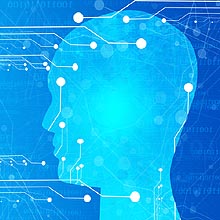| Home I About Us I Success Stories I Articles I Franchise I Contact Us |
|
Home |
Neurofeedback
Neurofeedback, also called neurotherapy and EEG biofeedback, is an intervention for ADHD that is based on findings that many individuals with ADHD show low levels of arousal in frontal brain areas. The basic understanding is that the brain emits various brainwaves that are indicative of the electrical activity of the brain and that different types of brainwaves are emitted depending on whether the person is in a focused and attentive state or a drowsy/day dreaming state. Neurofeedback involves providing individuals with real-time feedback on their brainwave activity in order that they may learn to alter their typical EEG pattern to one that is consistent with a focused and attentive state. According to neurofeedback proponents, when this occurs, improved attention and reduced hyperactive/impulsive behavior will result. Furthermore, this change is likely to endure because it reflects a basic alteration in an important aspect of brain functioning. Neurofeedback has been a source of substantial controversy in the field for many years and remains so today. Although there are a number of published studies in which positive results have been reported, many prominent ADHD researchers feel that given significant limitations to the design and implementation of these studies, neurofeedback should be considered a promising, but unproven treatment. |